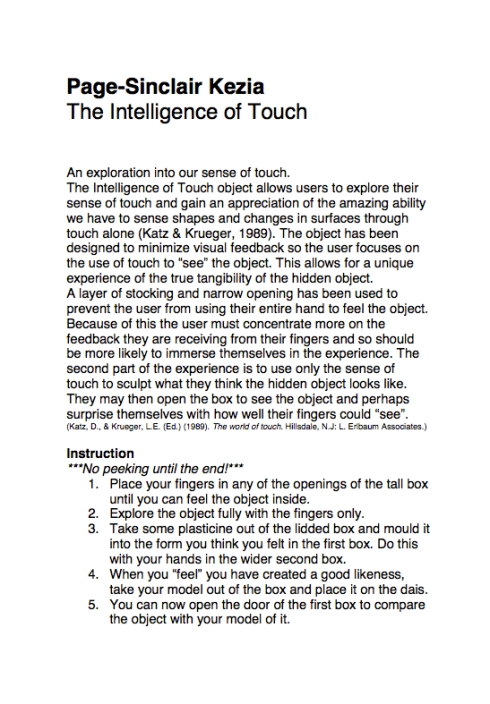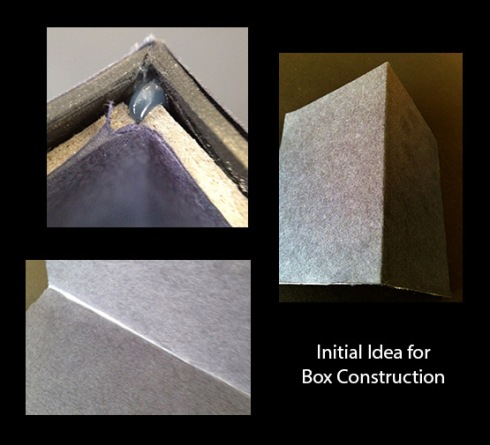I tried to keep the materials used in this project simple and in keeping with each other in terms of complimenting each other in tone, colour and materiality.
The linseed oil bought out the beauty in a plywood that was cheap to buy because of its specified use for shelving. I think I have managed to make it look like it was as low-cost as what it was and it had some beautiful grain patterns in it to start with that all I really needed to do was to choose where I cut wisely, sand it till it was as smooth as possible and apply several layers of boiled linseed oil to bring out the grain and give it a beautiful warm golden glow.
The lighter colours of the aluminium rods and the ply contrasted nicely with the black matte of the mounting board.
The use of a light coloured middle layer for the walls was a deliberate choice. I wanted to mirror the layering inherent in the ply and break up the heaviness of the black. The decision to use three layers of card was based on feedback from my tutor Steve about making it durable so that it could withstand users getting in there and really trying to feel the object. The use of PVA was for the same reason as it is supposed to make the multiple layers stronger than if I had used a different adhesive. I do however have concerns that the type of black card I used marks a little too easily for my liking.
I settled on black stocking material for the barriers at the holes as it was matte in appearance like the mounting board, it had just the right amount of stretch and wasn’t too thick to inhibit the ability to feel the object too much. It also had just the right amount of opacity to still let some light in but prevent users from seeing the object until they opened the door and it prevented them from peering in to see how they were doing at sculpting. My only concern is that stockings aren’t known for their long-lasting durability and they will deteriorate over time.
I used brass rods over aluminium ones for the heart as they were thinner and the colour went nicely with the red of the heart. When it came to colouring that heart I could have used a pigment which would have made it opaque but I felt the dye held true to the origins of the heart, namely a glass bottle and it really does look quite beautiful in the light. I love that you can see the rods through it and the brass compliments the red nicely.
 All in all I am happy with how my design finally turned out. I feel I have kept the materials and the use of them quite simple and I am glad that I decided to show not just the natural beauty of the materials but also the design process over disguising or hiding any of it.
All in all I am happy with how my design finally turned out. I feel I have kept the materials and the use of them quite simple and I am glad that I decided to show not just the natural beauty of the materials but also the design process over disguising or hiding any of it.
Would I add improvements to the design? Damn straight I would! In fact I plan to over the summer holidays. I would still love to have interchangeable hidden objects stored in their own little boxes and then slotted into the object box without being seen. I would like to make the object box more modular as well so that the difficulty level could be ramped up that way as well as with increasingly complex hidden objects.
It would be good to make it so that the hand-holes can be changed, either for ones with no barrier layer or with different types of barriers such as latex and rubber. That would also solve the issue of the gradually deteriorating stocking material as it could just be replaced when worn out. I am think of them being slid into place. The other option would be to have the objects in barrier sleeves but I can see issues with that such as seeing the object after and once again what to do when the material around it deteriorates.
I have also thought about adding mobility to it. Maybe it could be designed to fold up when not in use and maybe I could make the hidden object box spin round easily in one place and then be able to turn another base layer that easily brings the sculpt box to where you are. All just possibilities at the moment to mull over in my subconscious until I have the time to work on it again.
I have really enjoyed doing this project. I loved trying to figure out solutions to problems I was having with the design and getting feedback from my tutor and my fellow students was always useful. I am glad I got the chance to finish this project. Though having said all that, I really struggle with the blogging aspect. It always seems time-consuming to me and I have the problem that once I have thought about something or done something I feel I finished it and to have to then sit down and write about it feels like I am just going over ground I have already travelled. I do understand how important it is to blog about the process while in it as it is a vital way for our learning facilitators to see what we are doing and give us feedback about our process. I guess it is something I will just have to work on.













